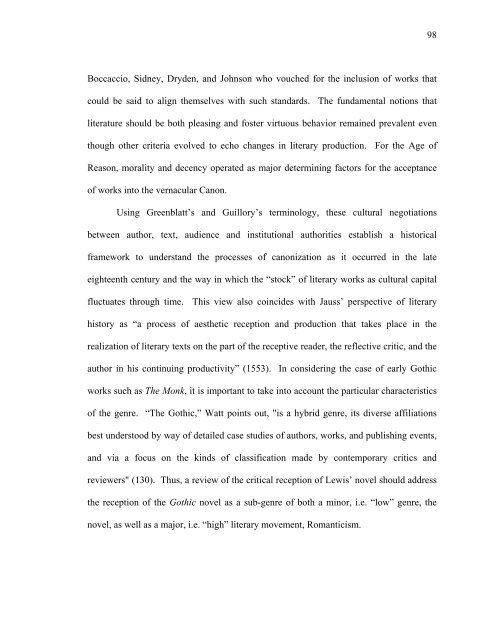Untitled - Sexey's School Moodle
Untitled - Sexey's School Moodle
Untitled - Sexey's School Moodle
Create successful ePaper yourself
Turn your PDF publications into a flip-book with our unique Google optimized e-Paper software.
Boccaccio, Sidney, Dryden, and Johnson who vouched for the inclusion of works that<br />
could be said to align themselves with such standards. The fundamental notions that<br />
literature should be both pleasing and foster virtuous behavior remained prevalent even<br />
though other criteria evolved to echo changes in literary production. For the Age of<br />
Reason, morality and decency operated as major determining factors for the acceptance<br />
of works into the vernacular Canon.<br />
Using Greenblatt’s and Guillory’s terminology, these cultural negotiations<br />
between author, text, audience and institutional authorities establish a historical<br />
framework to understand the processes of canonization as it occurred in the late<br />
eighteenth century and the way in which the “stock” of literary works as cultural capital<br />
fluctuates through time. This view also coincides with Jauss’ perspective of literary<br />
history as “a process of aesthetic reception and production that takes place in the<br />
realization of literary texts on the part of the receptive reader, the reflective critic, and the<br />
author in his continuing productivity” (1553). In considering the case of early Gothic<br />
works such as The Monk, it is important to take into account the particular characteristics<br />
of the genre. “The Gothic,” Watt points out, "is a hybrid genre, its diverse affiliations<br />
best understood by way of detailed case studies of authors, works, and publishing events,<br />
and via a focus on the kinds of classification made by contemporary critics and<br />
reviewers" (130). Thus, a review of the critical reception of Lewis’ novel should address<br />
the reception of the Gothic novel as a sub-genre of both a minor, i.e. “low” genre, the<br />
novel, as well as a major, i.e. “high” literary movement, Romanticism.<br />
98



